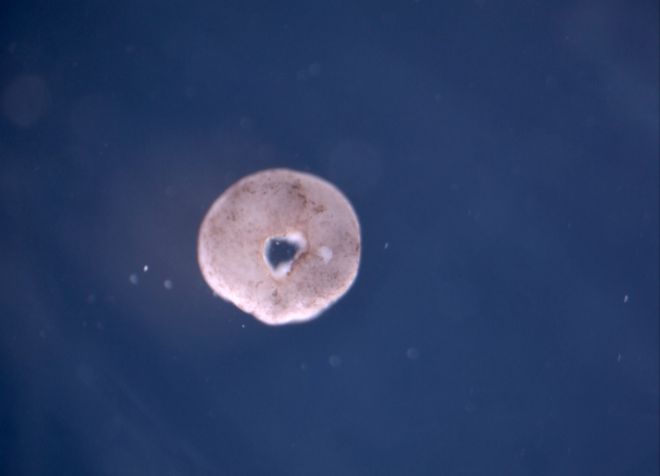A team of American scientists has managed to reorganize living cells, obtained from frog embryos, to create a completely new functional organic system . Baptized as xenobots, they are able to move, explore the environment and regenerate themselves in case of damage. This is the first time that scientists have been able to "design completely biological machines from scratch" , as explained by their creators. Details of his work are published Monday in the Proceedings of the National Academy of Sciences (PNAS).
The robots, with a width of only one millimeter, were designed by the supercomputer Deep Green of the University of Vermont , and then assembled and developed in the Biology Laboratory at Tufts University in Massachusetts.
In the first phase , an artificial intelligence algorithm was used, capable of generating and simulating thousands of designs, until finding the optimal candidate to achieve the desired structure and characteristics. Imitating natural selection, the less effective versions are discarded, while the faster ones are modified and improved. "We use an evolutionary algorithm, a computer program that creates robots in a virtual world with random shapes and patterns, from two types of cells: skin and heart muscle," explains Josh Bongard, head of the Morphology, Evolution and Cognition Laboratory of the University of Vermont.
In a second stage, the Tufts Center for Regenerative Biology and Processing of Morphological Information team transferred those in silico designs - that is, created by an algorithm - to living cells. It was based on stem cells obtained from African frog embryos, specifically of the Xenopus laevis species, hence the name of xenobots.
For this they used tools and a small precision electrode, to modify and join the cells until the design generated by the supercomputer was reproduced. "Muscle cells palpitate, so depending on the way we give the robot, we can get a faster or slower movement," adds the researcher.
From the computer to the cell
Once assembled, the cells began to work together: those of the skin formed a passive structure, while those contractions from cardiac muscles generated the desired movement.
The result is a living system, whose behavior is reinforced by the natural tendency of cell self-organization; The resulting organisms not only offer the possibility of reconfiguring themselves (opening the door to the execution of multiple tasks) but they are also able to move coherently . And even, according to the authors, to explore their surroundings for days, provided they have an embryonic energy source. " There is a whole innate creativity in life; we want to understand it better and find new ways, " says Bongard.
In some additional tests, xenobots with a hole in the center were tested to reduce resistance to movement. Scientists believe that this type of design can be developed to transport loads to targets designated by their creators. "We can imagine a multitude of useful applications," explains Michael Levin, head of the Tufts University laboratory, "how to find and eliminate hazardous materials, collect microplastics in the oceans or travel through blood vessels to finish the arterial plaque ."
Concerns
In another experiment, the scientists cut the xenobots to study their reaction. "He sewed himself and moved on," Bongard recalls. The team believes that the finding can lead to a revolution not only in regenerative medicine (creating or rebuilding parts of the body), but also the same principles can be used to introduce significant improvements in robotics, communication systems and perhaps also in artificial intelligence platforms.
"The long-term goal is to find out how living agents (cells) can be motivated to build specific objects, and how to exploit their plasticity to do things that are too difficult at the microscopic level," says Levin. "Once we discover how cells can be induced to build specific structures, we can send them the appropriate messages to build what we want."
On the other hand, the authors are aware of the ethical and material questions that may arise from these complex biological manipulations. "It is true that these fears are not irrational," the biologist concedes, "when we begin to modify complex systems that we do not understand, we will find unwanted consequences. But for humanity to survive in the future, we need to better understand how the properties complex, somehow, emerge from simple rules. "
According to the criteria of The Trust Project
Know more- Science and Health
- science
Circular economy Artificial intelligence reaches the garbage can
Astronomy2020: an excellent year for space exploration
Oceans Identify a growing mass of "extremely warm" water in the Pacific along with New Zealand

